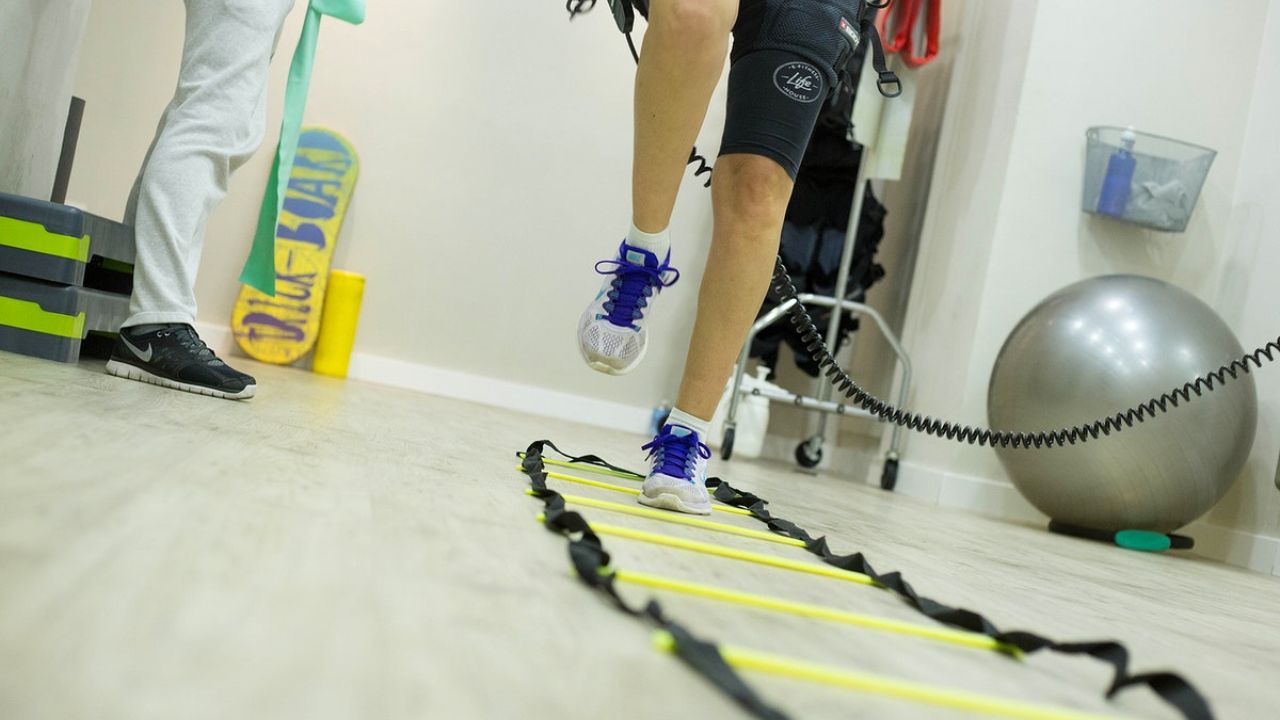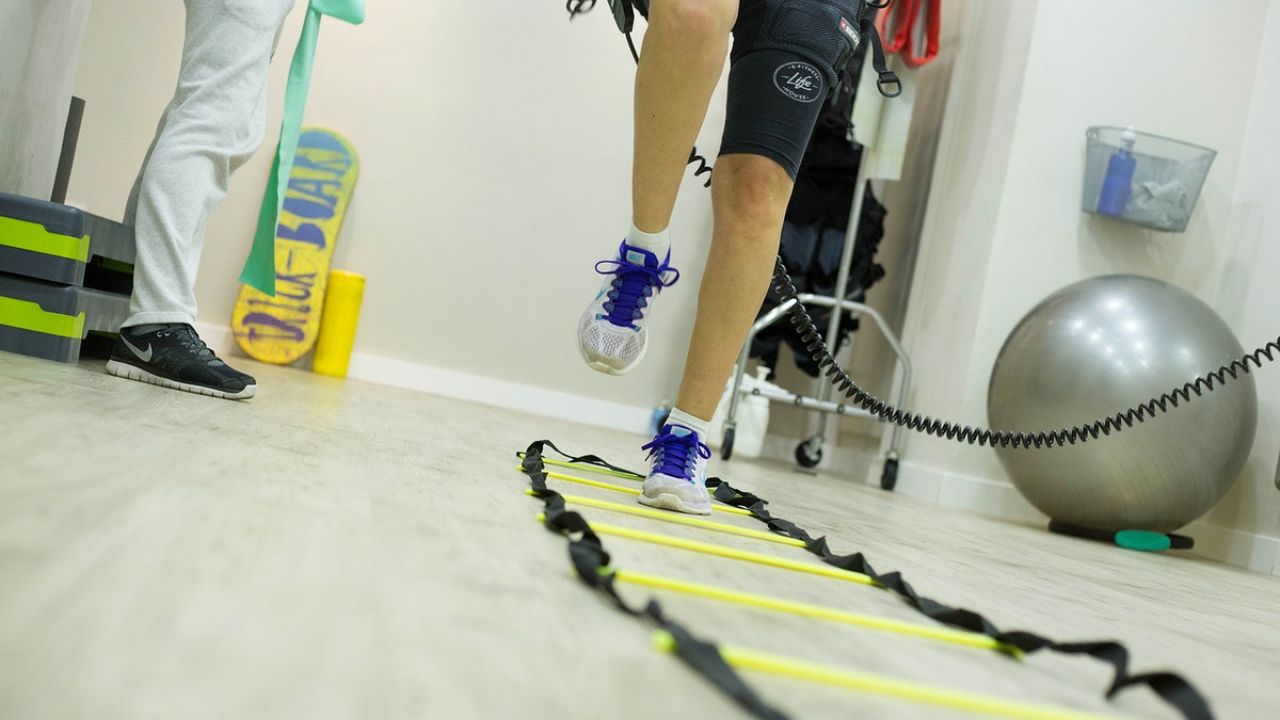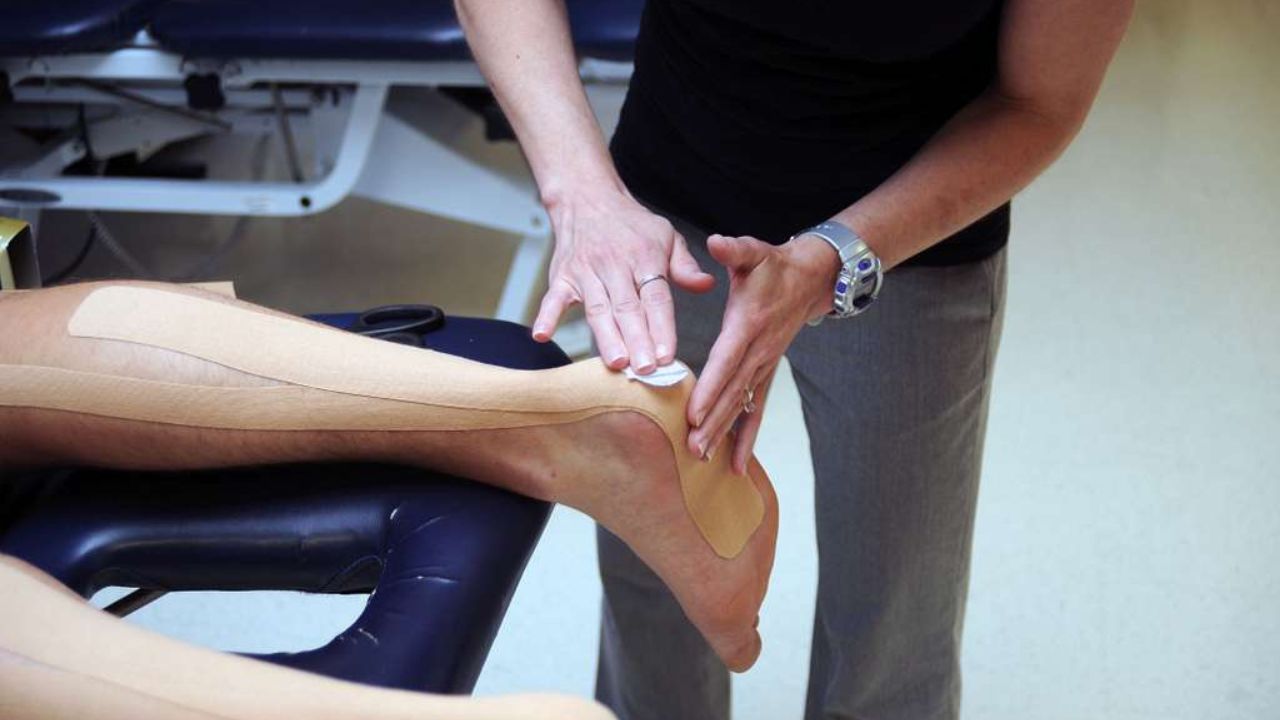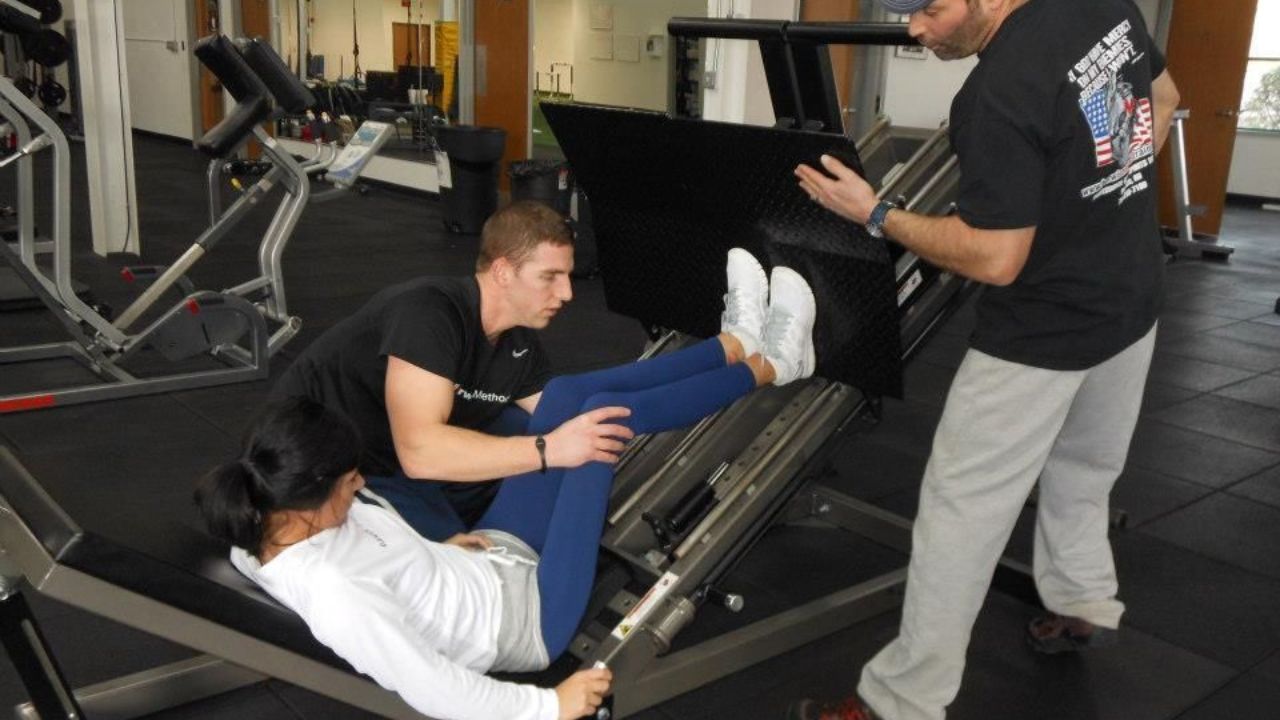
In order to fully participate in physical activities and maintain a healthy lifestyle, it is crucial to prioritize injury prevention. This article explores the 12 must-have components for effective conditioning to minimize the risk of injuries.
By incorporating warm-up exercises, mobility drills, and strength training, individuals can prepare their bodies for physical activity and reduce the risk of strains and sprains. Warm-up exercises increase blood flow to the muscles, improve flexibility, and enhance joint mobility. Mobility drills focus on improving range of motion and flexibility in specific joints, while strength training builds muscle strength and endurance.
Plyometric exercises, which involve explosive movements, can help improve power and agility while also reducing the risk of muscle imbalances and overuse injuries. Balance and stability exercises, such as yoga or Pilates, can improve coordination, proprioception, and core strength, which are essential for injury prevention.
Rest and recovery are also crucial components of conditioning. Giving the body enough time to recover between workouts helps prevent overtraining and decreases the risk of injuries caused by fatigue or muscle imbalances.
Injury prevention strategies, such as proper technique and equipment usage, should also be implemented to minimize the risk of injuries. Cross-training activities, such as swimming or cycling, can help individuals develop a well-rounded fitness level and reduce the risk of overuse injuries.
Finally, sports-specific conditioning focuses on training the body to meet the demands of a particular sport or activity. This type of conditioning can improve performance and reduce the risk of sport-specific injuries.
By incorporating these 12 components into their conditioning routine, individuals can enhance their physical performance and reduce the likelihood of experiencing injuries. This comprehensive approach will empower readers to pursue their fitness goals with confidence and freedom.

Warm-Up Exercises
The inclusion of dynamic stretching exercises is crucial for an effective warm-up routine. When it comes to preparation methods for physical activities, dynamic stretching has been proven to be highly beneficial.
Unlike static stretching, which involves holding a stretch for a prolonged period, dynamic stretching involves moving parts of your body through a full range of motion. This not only helps to increase flexibility but also improves blood flow and warms up the muscles, preparing them for the upcoming activity.
Dynamic stretching can include movements such as arm circles, leg swings, and trunk rotations. By incorporating dynamic stretching into your warm-up routine, you can enhance your performance, reduce the risk of injury, and ensure that your body is ready for the physical demands ahead.
Mobility Drills
Implementing mobility drills is essential for enhancing joint range of motion and preventing injuries during physical activities. These drills involve dynamic stretching and foam rolling, which are effective techniques for improving flexibility and reducing muscle tension.
Dynamic stretching involves actively moving through a range of motion, preparing the muscles for movement and increasing blood flow to the working muscles. This helps to improve joint mobility and flexibility, reducing the risk of muscle strains and tears.
Foam rolling, on the other hand, is a self-myofascial release technique that targets tight muscles and trigger points. By applying pressure to these areas using a foam roller, you can release muscle tension and improve mobility.
Incorporating these mobility drills into your conditioning program will help you move more freely and confidently, reducing the risk of injuries during physical activities.

Strength Training
To effectively prevent injuries, incorporating strength training is vital for improving muscular strength and overall physical performance. Strength training is a key component of injury prevention strategies as it helps to build strong muscles, tendons, and ligaments, which are essential for supporting the body during physical activities.
By engaging in regular strength training exercises, individuals can enhance their ability to withstand the demands placed on their bodies, reducing the risk of injuries. Strength training also improves balance, stability, and coordination, further reducing the likelihood of accidents or falls. Additionally, it can help to correct muscle imbalances and asymmetries, which can contribute to overuse injuries.
Incorporating strength training into a well-rounded conditioning program is crucial for maintaining optimal physical health and preventing injuries in both athletes and individuals seeking to lead an active lifestyle.
Plyometric Exercises
One essential component for effective conditioning and injury prevention is incorporating a variety of plyometric exercises. Plyometric exercises, also known as jump training, involve explosive movements that help improve power, speed, and agility. These exercises can be beneficial for individuals who desire freedom in their movements and want to enhance their athletic performance.
Here are three key benefits of incorporating plyometric exercises into your conditioning routine:
Increased power and explosiveness: Plyometric exercises require quick and forceful movements, which can enhance your ability to generate power and explosiveness in various sports and activities.
Improved agility and coordination: These exercises challenge your balance, coordination, and body control, leading to improved agility and overall athletic performance.

Injury prevention: Plyometric exercises strengthen muscles, tendons, and ligaments, reducing the risk of injuries by improving the body's ability to absorb and distribute forces.
Incorporating plyometric exercises into your conditioning routine can help you achieve better physical performance while reducing the risk of injuries.
Balance and Stability Exercises
The incorporation of balance and stability exercises is crucial for effective conditioning and injury prevention.
These exercises not only improve proprioceptive awareness but also help in ankle strengthening, which is essential for maintaining stability and preventing injuries.
Proprioceptive exercises focus on enhancing the body's ability to perceive its position in space, improving coordination and balance.
They involve activities like standing on one leg, using a balance board, or performing movements on an unstable surface.
By challenging the body's balance and stability, these exercises train the muscles, tendons, and ligaments to respond effectively to sudden movements or changes in terrain.

Incorporating ankle strengthening exercises alongside proprioceptive exercises can further enhance stability and reduce the risk of ankle sprains, a common injury in sports and everyday activities.
Core Strengthening Exercises
With a focus on developing stability and promoting proper posture, core strengthening exercises play a vital role in effective conditioning and injury prevention. By targeting the muscles in the abdomen, lower back, and pelvis, these exercises improve core stability, which is essential for maintaining balance and preventing injuries.
Here are three core strengthening exercises that can help you achieve a strong and stable core:
- Plank: This exercise engages multiple core muscles and promotes stability throughout the entire body.
- Russian Twist: By rotating the torso, this exercise targets the oblique muscles, enhancing core strength and stability.
- Bridge: This exercise activates the glutes and lower back muscles, improving core stability and reducing the risk of back pain.
Incorporating these core strengthening exercises into your fitness routine can not only enhance your athletic performance but also help prevent injuries, particularly back pain. So, embrace the freedom of movement and prioritize your core strength for a healthier, more active lifestyle.
Flexibility Training
Flexibility training, along with core strengthening exercises, is an essential component of effective conditioning for injury prevention. Flexibility refers to the range of motion in a joint or group of joints. It is crucial for maintaining proper posture, preventing muscle imbalances, and reducing the risk of injuries.
Dynamic stretching, which involves moving the joints through a full range of motion, is an effective way to improve flexibility. It helps to increase blood flow, warm up the muscles, and enhance joint mobility.
Additionally, proprioceptive exercises, which focus on improving balance and body awareness, can also contribute to injury prevention. By incorporating these exercises into a conditioning program, individuals can enhance their flexibility, reduce the risk of injuries, and enjoy the freedom of movement.

To ensure optimal results and minimize the risk of injury, individuals must prioritize proper form and technique when performing conditioning exercises. Proper form and technique are essential for maximizing the benefits of each exercise while minimizing the potential for harm. Unfortunately, many people make common mistakes that increase their risk of injury. It is important to be aware of these mistakes and take steps to correct them.
Some common mistakes to avoid include:
- Using too much weight or resistance, which can strain muscles and joints.
- Not maintaining proper alignment, which can put unnecessary stress on the body.
- Rushing through exercises, sacrificing form for speed and increasing the risk of accidents.
Rest and Recovery
For optimal results and injury prevention, it is crucial to prioritize adequate rest and recovery periods between conditioning sessions. Rest and recovery are essential components of any effective conditioning program.
Recovery techniques and restorative practices allow the body to repair and rebuild itself, helping to prevent overuse injuries and promote overall well-being. Incorporating rest days into your training schedule allows muscles, tendons, and ligaments to recover from the stress of exercise, reducing the risk of injury.
Additionally, using specific recovery techniques such as foam rolling, stretching, and massage can help alleviate muscle soreness, improve flexibility, and enhance overall performance.
Rest and recovery should not be seen as a weakness or laziness, but rather as a necessary part of a balanced and sustainable approach to fitness. Prioritizing rest and recovery will ultimately lead to improved performance, increased longevity, and a more enjoyable and fulfilling fitness journey.
Injury Prevention Strategies
Implementing a variety of proactive measures is essential for effective injury prevention in any training program. By focusing on injury prevention strategies, athletes can minimize the risk of common sports injuries and maximize their performance potential.

Here are three key strategies to consider:
Proper warm-up and cool-down routines: Engaging in dynamic stretching and mobility exercises before a workout helps prepare the body for physical exertion. Similarly, performing static stretches and foam rolling post-workout aids in muscle recovery and reduces the likelihood of injury.
Strength and flexibility training: Building strength in the muscles and improving flexibility helps to support joints, enhance stability, and prevent imbalances that can lead to injuries. Incorporating exercises that target specific muscle groups and joint mobility can be beneficial.
Injury prevention exercises: Including exercises that target weak areas or previous injury sites can help to strengthen and stabilize those areas, reducing the risk of reinjury. Rehabilitation techniques such as proprioceptive training and balance exercises can also aid in injury prevention.
Cross-Training Activities
Incorporating a variety of cross-training activities is essential for enhancing overall fitness and preventing injuries in athletes. One effective method is interval training, which involves alternating between high-intensity exercises and periods of rest or lower intensity. This type of training helps to improve cardiovascular endurance, increase speed, and build strength. By pushing the body outside of its comfort zone, interval training promotes adaptation and resilience, reducing the risk of injury.
Additionally, incorporating agility drills into cross-training activities can enhance an athlete's ability to change direction quickly, improve coordination, and enhance balance. These drills often involve ladder exercises, cone drills, and shuttle runs.
Sports-Specific Conditioning
An essential aspect of effective conditioning for injury prevention is the inclusion of specific sport-related exercises that target the muscles and movements used in the athlete's chosen activity. Sports-specific conditioning goes beyond general fitness training and focuses on enhancing the athlete's performance by mimicking the demands of their sport.

Here are three key components of sports-specific conditioning:
Functional movements: Incorporating exercises that closely resemble the movements and actions performed in the specific sport. For example, a basketball player may focus on lateral movements, jumping, and quick changes in direction.
Agility training: Emphasizing exercises that improve an athlete's ability to move quickly and change direction with precision. This could involve ladder drills, cone drills, or reaction training.
Sport-specific drills: Engaging in drills that replicate game situations and challenges faced in the sport. This allows athletes to develop the necessary skills and techniques required for optimal performance.
Frequently Asked Questions
How Many Sets and Reps Should I Do for Each Exercise in My Warm-Up Routine?
The number of sets and reps for each exercise in a warm-up routine depends on individual factors such as fitness level and specific goals. It is important to incorporate alternative warm-up exercises and dynamic stretching to maximize the benefits.
Can I Substitute Mobility Drills With Stretching Exercises for Injury Prevention?
Stretching and mobility drills both play a crucial role in injury prevention. While stretching improves flexibility, mobility drills focus on joint range of motion. Combining both in a conditioning program is recommended for optimal results.
What Is the Recommended Rest Period Between Sets During Strength Training?
Rest period recommendations during strength training vary depending on the specific goals and intensity of the workout. Optimal recovery time typically ranges from 1-3 minutes between sets to allow for adequate muscle recovery and performance optimization.

Are There Any Specific Plyometric Exercises That Can Help Prevent Ankle Injuries?
Plyometric drills that target ankle stability can be effective in preventing ankle injuries. Additionally, incorporating strength training exercises can provide further benefits for injury prevention by enhancing overall muscular strength and stability.
How Often Should I Incorporate Balance and Stability Exercises Into My Workout Routine for Injury Prevention?
To effectively prevent injuries, it is crucial to incorporate balance and stability exercises into your workout routine. The frequency of these exercises will vary depending on individual needs, but regular incorporation is essential. Functional movements should also be prioritized for comprehensive injury prevention.
 Mobility trainingHome Fitness RecoverySports Injury PreventionPersonal Physical TherapyOrthopedic SolutionsPrivacy PolicyTerms And Conditions
Mobility trainingHome Fitness RecoverySports Injury PreventionPersonal Physical TherapyOrthopedic SolutionsPrivacy PolicyTerms And Conditions
